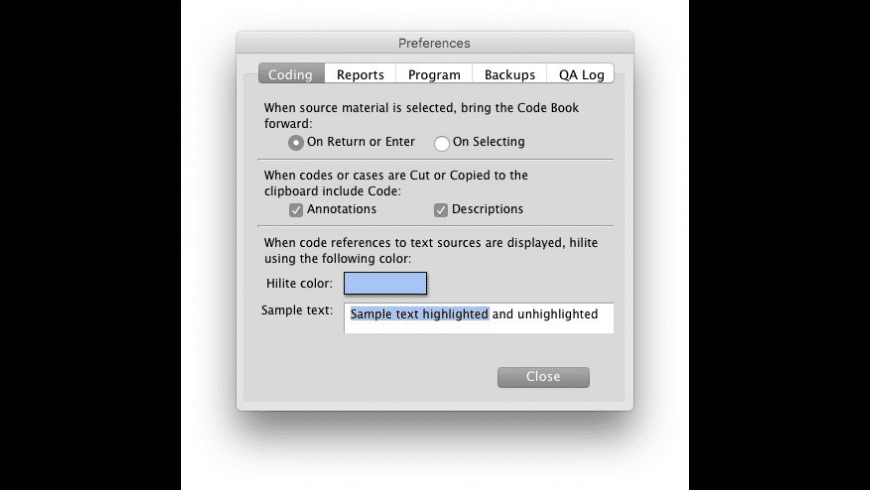

The code description appears at the bottom of the Code Book when the code is selected (Codes are listed in alphabetical order.)Įach code can have a description, which can include a definition of the code, a discussion of how the code shoud be used, or just your notes to yourself. Your code name can be of any length, and can include any combination of the following characters: A code should be a brief summary – a word or short phrase – that describes an idea or concept that you encounter in the source material. To create a new code, choose Codes > New Code and enter the code’s name. You can create a number of codes before beginning the coding process, or let your codes emerge naturally from your source material, or a combination. You can create a new code at any time, whether you’re currently coding source material or not. You can organize codes into groups and subgroups.Ĭodes are displayed and managed in the Code Book window. A code summarizes the idea conveyed by the source selection, and coding source material helps organize its ideas and concepts for analysis. For more information, see the “Code Book” section in the Options/Preferences Window topic in the HyperRESEARCH Help system.Ĭodes are the words or phrases you use to label selected segments of source material. TIP: If you’ve chosen the On Selection coding option in the Options/Preferences window, the Code Book comes to the front automatically when you’ve selected a passage, and you don’t need to choose a menu item or press a key. In the Code Book window, select one or more codes, then click the Apply Code button at the top of the window (or choose Codes Apply Code). Applying a code creates a code reference which appears in your study window, assigned to the current case.Drag one or more codes from the Code Book to your source window.You can apply a code in either of two ways: Apply one or more codes to your selection. Select the source material you want to codeĤ. If you open another source, any currently open source window closes.ģ. NOTE: You can have only one source window open at any time.
#Download hyperresearch movie
Choose Sources > Open Text File , Sources > Open Image File, or Sources > Open Movie or Audio File and select the source you want to code. For more information about navigating through cases, see the Study Window topic.)Ģ. (The case name appears near the top of the study window. Make sure that your study window is showing the case you want to code to. To code source material, follow these steps:ġ. The process of coding in HyperRESEARCH is straightforward. Essentially, the codes will serve as a proxy for the ideas expressed by the source material.įor a pictorial guide to the coding process for text sources, see Quick Start to Coding. Then, during the analysis phase of your study, you’ll compare codes across your source material, look for relationships between codes, and test theories based on where codes occur in your sources. Your codes are tags that represent certain ideas, which you apply to selections of the source material that show or exemplify that idea in some way. Coding forms the basis of the analysis you’ll perform later.


 0 kommentar(er)
0 kommentar(er)
